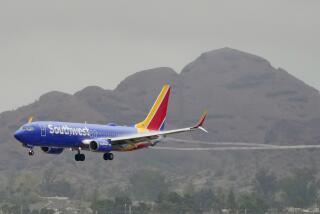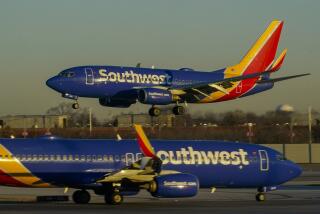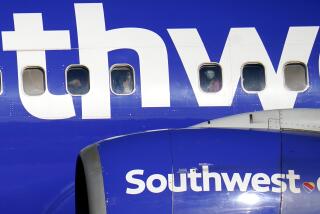Visibility Waiver Cited in Air Crash
CHICAGO â The pilots of Southwest Airlines Flight 1248 were permitted to attempt a landing in extremely bad weather at Midway Airport because the airline holds a special waiver to operate below regular minimum-visibility safety regulations, federal officials said Wednesday.
Part of the investigation into the Dec. 8 crash is focusing on whether diminished visibility contributed to the Southwest captainâs failure to carry out a well-flown approach, causing him to overshoot the touchdown area on the short, snowy runway, officials said.
Accident investigators are comparing data to determine the exact visibility level at the time the plane skidded off the runway, blasted through airfield barriers and crashed into several vehicles on Central Avenue outside the airport, killing a 6-year-old boy in one of the cars.
âEverything will come out as we investigate the rules and waivers for flying into Midway,â said Keith Holloway, a spokesman for the National Transportation Safety Board.
Among the 10 airlines serving Midway, Southwest and ATA Airlines have been granted waivers from the Federal Aviation Administration that allow planes to land when visibility is below three-fourths of a mile -- the established standard on Runway 31 Center, where the Southwest accident occurred.
From a safety standpoint, low-visibility landings are more acceptable when other factors are favorable. They include a clean, dry runway; a strong headwind to help slow the plane; and a long runway.
None of these conditions existed for Flight 1248.
More to Read
Sign up for Essential California
The most important California stories and recommendations in your inbox every morning.
You may occasionally receive promotional content from the Los Angeles Times.










